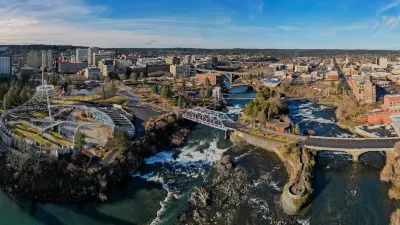A new report argues that city-owned lands must be leveraged to increase D.C.'s stock of affordable housing, and indicts Mayor Gray's administration for not doing enough to keep up with increasing demand.
A new report [PDF] from the Coalition for Smarter Growth argues that the vacant lots, aging schools, federal property, and other facilities acquired by the District of Columbia in the decades following the destructive 1968 riots should be put to use in service of providing affordable housing, as post-recession development increases.
According to John Muller, "[t]he report details where and how the District can make better use of
its ownership leverage to increase affordable housing opportunities on
public land. Where previous mayors made strong commitments to affordable
units in development projects on city land, Mayor Gray's administration
has been more lax."
"Our public lands are so valuable, and we're concerned the city
is not going to deliver the affordability that it's achieved in the
past," says Cheryl Cort, Policy Director for the Coalition for Smarter
Growth. "We urge the Mayor and the Housing Task Force to recommit to leveraging city-owned land to create a substantial amount of affordable housing, including at deeply affordable levels."
"DC has a shortage of affordable housing," says Muller, "but it has no shortage of
public land. The District needs to use this land to guarantee more
affordable housing so that we can remain an economically diverse city."
FULL STORY: DC public land must yield affordable housing, says report

Maui's Vacation Rental Debate Turns Ugly
Verbal attacks, misinformation campaigns and fistfights plague a high-stakes debate to convert thousands of vacation rentals into long-term housing.

Planetizen Federal Action Tracker
A weekly monitor of how Trump’s orders and actions are impacting planners and planning in America.

In Urban Planning, AI Prompting Could be the New Design Thinking
Creativity has long been key to great urban design. What if we see AI as our new creative partner?

King County Supportive Housing Program Offers Hope for Unhoused Residents
The county is taking a ‘Housing First’ approach that prioritizes getting people into housing, then offering wraparound supportive services.

Researchers Use AI to Get Clearer Picture of US Housing
Analysts are using artificial intelligence to supercharge their research by allowing them to comb through data faster. Though these AI tools can be error prone, they save time and housing researchers are optimistic about the future.

Making Shared Micromobility More Inclusive
Cities and shared mobility system operators can do more to include people with disabilities in planning and operations, per a new report.
Urban Design for Planners 1: Software Tools
This six-course series explores essential urban design concepts using open source software and equips planners with the tools they need to participate fully in the urban design process.
Planning for Universal Design
Learn the tools for implementing Universal Design in planning regulations.
planning NEXT
Appalachian Highlands Housing Partners
Mpact (founded as Rail~Volution)
City of Camden Redevelopment Agency
City of Astoria
City of Portland
City of Laramie





























